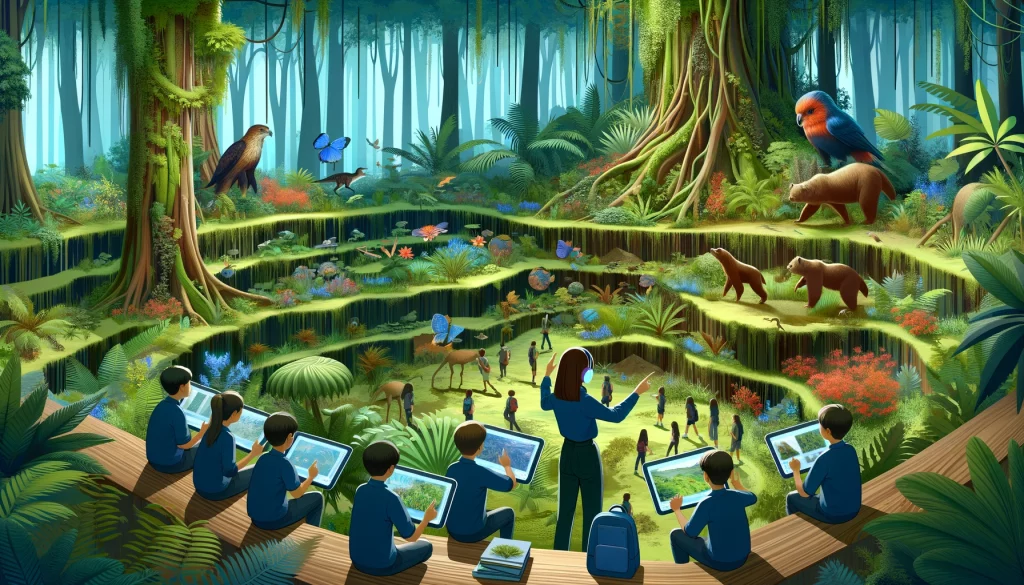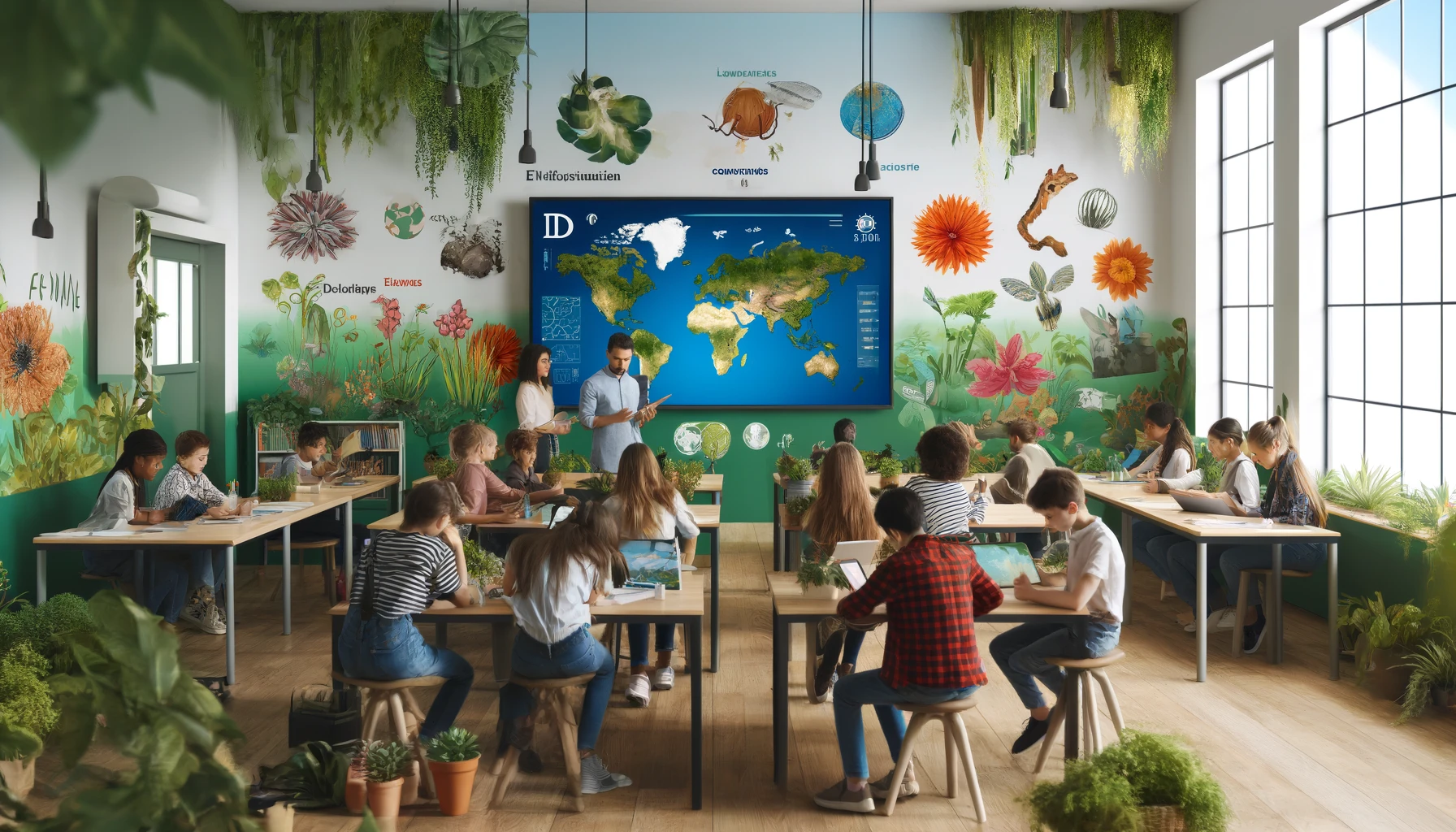I. Introduction
The world is facing unprecedented environmental challenges, from climate change and deforestation to pollution and biodiversity loss. These issues threaten the health of our planet and the future of all its inhabitants. In this context, education emerges as a powerful tool to foster environmental conservation and sustainability. By raising awareness, shaping attitudes, and empowering individuals to take action, education plays a crucial role in addressing these global issues.Investing in environmental education is investing in a better future for our planet. Through structured learning opportunities, individuals can gain the knowledge and skills needed to make informed decisions and contribute to positive change. By integrating environmental concepts into curricula, promoting hands-on learning experiences, and encouraging community engagement, education can inspire a new generation of environmental stewards. Together, we can work towards creating a more sustainable and resilient world for generations to come.
II. Understanding Environmental Education
Environmental education encompasses a wide range of teaching and learning activities aimed at developing knowledge, skills, and attitudes necessary for addressing environmental challenges. It involves understanding natural systems, human-environment interactions, and the impact of human activities on the planet. Historically, environmental education has evolved from basic nature study programs to comprehensive approaches that include sustainability and conservation as core elementsToday, environmental education plays a crucial role in fostering environmental literacy and empowering individuals to make informed decisions that contribute to a more sustainable future. By promoting awareness, critical thinking, and active participation, environmental education helps individuals become responsible stewards of the environment and advocates for positive change in their communities and beyond. As we continue to face complex environmental issues, the importance of environmental education in fostering a deeper understanding of the interconnectedness of nature and society cannot be overstated. Through ongoing education and engagement, we can work towards creating a more resilient and harmonious relationship with the natural world for generations to come. (UNESCO) (UNESCO Document Repository).
III. The Impact of Environmental Education
Enhancing Knowledge and Awareness

One of the primary goals of environmental education is to increase environmental literacy. Programs around the world have successfully raised awareness about environmental issues. For instance, UNESCO’s network of 10,000 Associated Schools implements a whole-school approach to climate action, integrating environmental topics across all subjects and activities (UNFCCC). Similarly, Costa Rica’s National Strategy on Climate Change emphasizes environmental literacy, engaging thousands of schools in conservation activities since 2004Moreover, initiatives like the Sustainable Development Goals (SDGs) highlight the importance of incorporating environmental education into formal schooling systems worldwide. By equipping students with the knowledge and skills to understand and address complex environmental challenges, we are shaping future generations of environmentally conscious global citizens. Through collaborative efforts and innovative educational approaches, we can continue to promote environmental literacy and foster a sustainable future for our planet. (UNFCCC).
Shaping Attitudes and Behaviors
Education not only imparts knowledge but also shapes attitudes and behaviors towards the environment. Studies show that students who receive environmental education are more likely to adopt pro-environmental behaviors, such as recycling and conserving energy (MDPI). In Kenya, a national action plan on Education for Sustainable Development has been instrumental in fostering eco-friendly practices among young peopleEffective environmental education programs not only benefit individuals but also society as a whole. By instilling a sense of responsibility and care for the environment in young minds, we are creating a future generation that is more conscious of their impact on the planet. Through education, we have the opportunity to shape a more sustainable and eco-friendlier world for generations to come. (MDPI).
IV. Integrating Environmental Education in Curricula
Formal Education
Incorporating environmental topics into formal education curricula is essential for building a foundation of knowledge and awareness. Countries like Vietnam have developed national frameworks to integrate sustainability into their education systems, ensuring that students learn about environmental issues from an early ageThis helps to cultivate a sense of responsibility and stewardship for the environment, as well as provide the necessary skills for future generations to address and mitigate environmental challenges. By teaching students about the importance of sustainability and how their actions can impact the planet, we are shaping a more environmentally conscious and environmentally literate society. This approach not only benefits the environment, but also contributes to the overall well-being and quality of life for all individuals. (UNFCCC).
Non-Formal and Informal Education
Non-formal and informal education initiatives complement formal education by reaching wider audiences through community programs and grassroots movements. NGOs and local organizations play a significant role in promoting environmental education through workshops, community projects, and public awareness campaignsIn addition, non-formal and informal education initiatives help to bridge the gap between theory and practice by providing hands-on learning experiences. These initiatives often incorporate experiential learning activities, such as field trips, outdoor adventures, and interactive games, to engage learners in a more immersive way. By fostering a deeper connection to the natural world, environmental education programs can inspire individuals to become more environmentally conscious and proactive in protecting the planet. (Gray Group International).
V. Innovative Approaches in Environmental Education
Use of Technology
Technology offers innovative ways to enhance environmental education. Virtual field trips, online simulations, and interactive learning modules provide immersive experiences that make learning engaging and impactful. For example, virtual trips to remote ecosystems allow students to explore and understand diverse habitats without leaving the classroomThrough online simulations, students can see the impact of human activities on the environment in real-time, fostering a deeper understanding of the need for conservation. Interactive learning modules enable students to participate in environmentally sustainable activities and learn about the importance of preserving natural resources. These technological tools not only make environmental education more accessible but also empower students to become active stewards of the environment. (Gray Group International).
Citizen Science and Collaborative Projects
Citizen science initiatives involve learners in real-world conservation efforts, fostering a sense of responsibility and empowerment. Projects like monitoring endangered species or participating in local clean-up drives not only contribute valuable data to scientific research but also promote active participation in conservation. This hands-on approach to learning helps individuals connect with nature on a deeper level, instilling a greater appreciation for the environment and a desire to protect it for future generations. By engaging in citizen science initiatives, participants become more informed and motivated agents of change, working towards a sustainable and harmonious coexistence with the natural world. (Gray Group International).

VI. Cultural and Contextual Relevance in Education
Effective environmental education programs must consider cultural and contextual relevance. Integrating local knowledge and traditions into educational content ensures that learning is meaningful and applicable to the learners’ environment. Programs that celebrate indigenous practices and local wisdom foster a deeper connection between communities and their natural surroundingsEncouraging active participation from community members further enhances the impact of environmental education initiatives. By involving local stakeholders in program design and implementation, educators can ensure that the content is tailored to the specific needs and interests of the community. This collaborative approach not only increases engagement and interest in the subject matter but also empowers individuals to take ownership of their environmental stewardship. In doing so, environmental education becomes more than just an educational tool – it becomes a catalyst for positive change within communities. (Gray Group International).
VII. Challenges and Opportunities
Despite its importance, environmental education faces several challenges, including limited resources, lack of trained educators, and insufficient integration into mainstream education systems. However, these challenges also present opportunities for innovation and collaboration. By leveraging technology, forming partnerships, and advocating for policy support, we can enhance and expand environmental education efforts globallyWe can create interactive and engaging digital platforms to reach a wider audience, collaborate with organizations and institutions to share resources and expertise, and push for policies that prioritize and fund environmental education. Through these efforts, we can work towards a more sustainable and environmentally conscious future. (UNFCCC) (Gray Group International).
VIII. Conclusion
Environmental education is a vital tool in the fight against global environmental challenges. By enhancing knowledge, shaping attitudes, and empowering action, it plays a crucial role in fostering a sustainable future. As we move forward
. . . we must prioritize and support education at all levels to cultivate a more informed and proactive global community. By empowering individuals through education, we can inspire the collective action needed to preserve our planet for future generations. We must invest in innovative educational programs that promote sustainability, environmental stewardship, and critical thinking skills. Through education, we can build a foundation of knowledge and values that will guide us towards a more sustainable future. Let us work together to ensure that education remains a top priority in our efforts to protect the planet and promote positive change.
